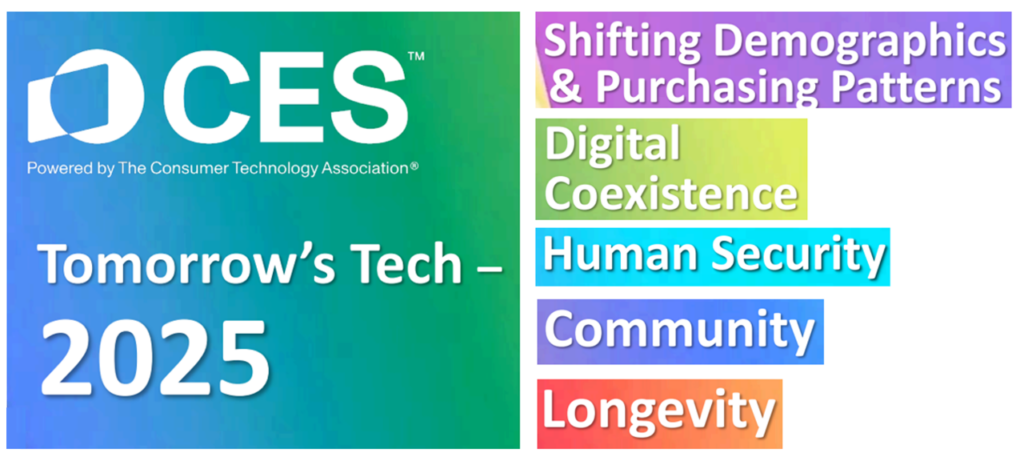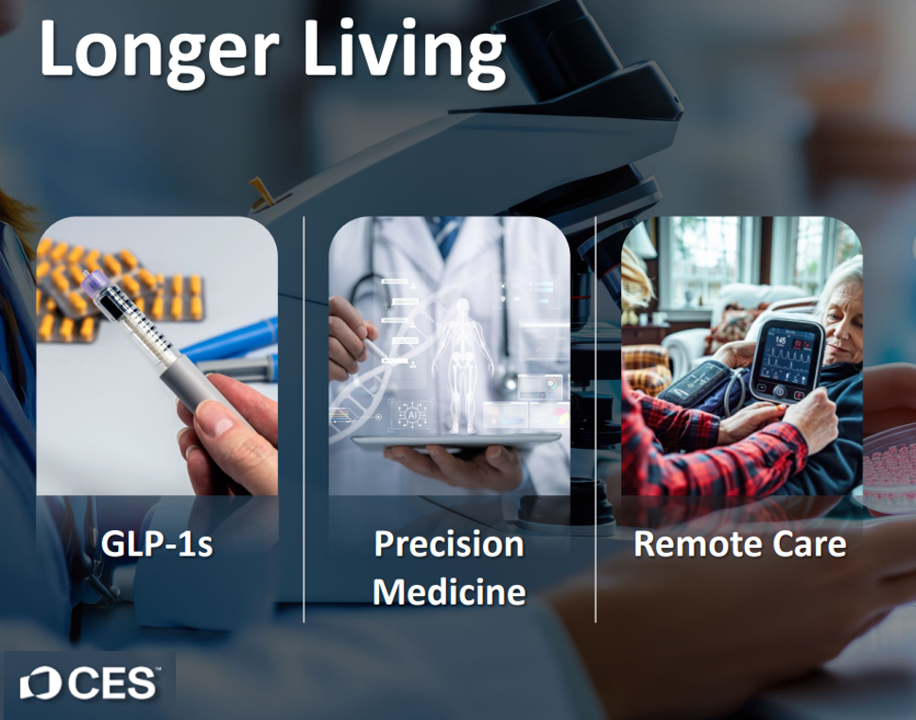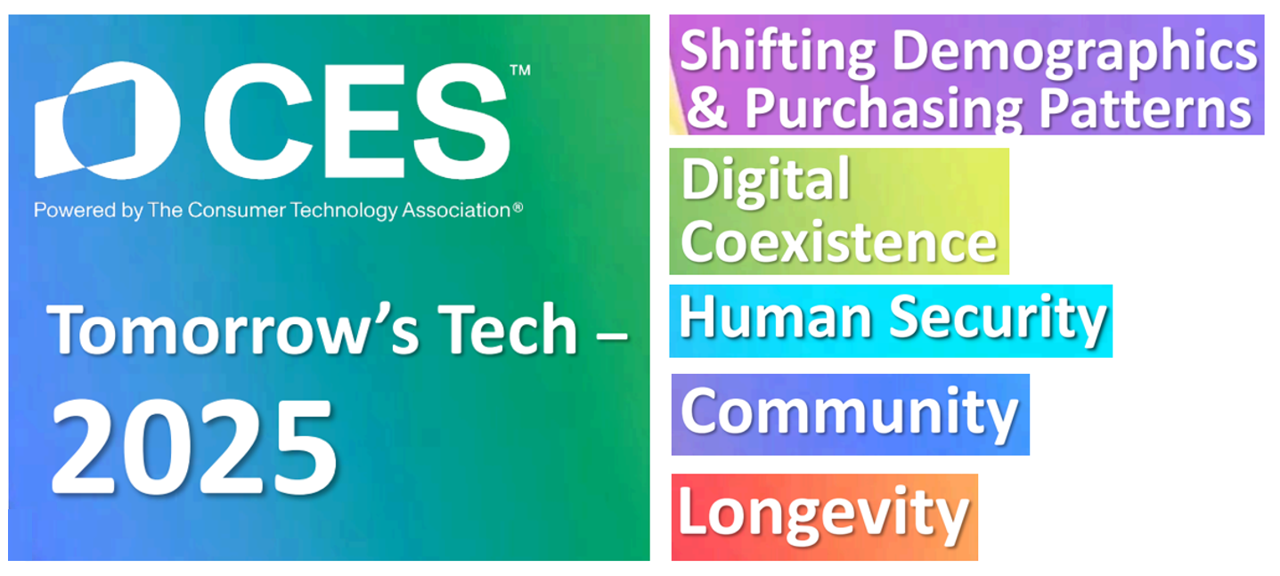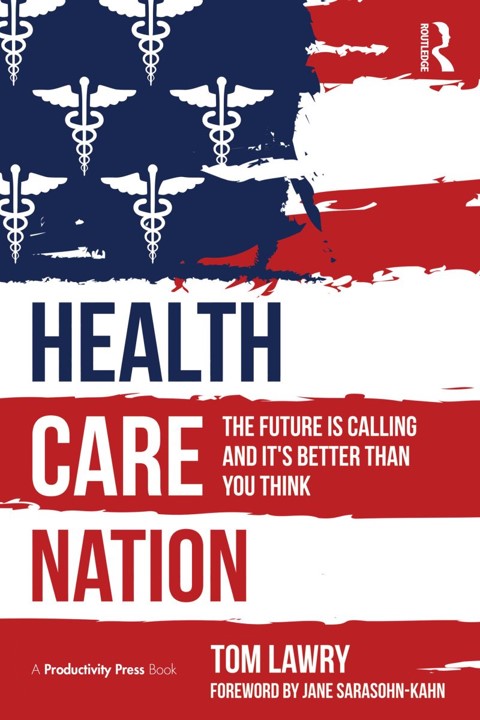People are living everyday life in digital coexistence — where the connected technologies we use for communication and entertainment now enable life-flows across our lives, morning to night, at work and play and even while we’re sleeping.
Welcome to the five key tech-trends for 2025, brought to life Sunday afternoon by Melissa Harrison, CTA’s Vice President of Marketing & Communications tag-teaming with Brian Comiskey, Senior Director, Innovation & Trends. This annual session at CES always provides a practical context for exploring the annual conference, the largest in the world covering technology used by everyday people.
And this year, the trends work together well for health at home, personalized, convenient, and community-enforcing — that is, if we design, channel, implement, and service with human security for all in mind and heart.

The trend-cast addressed five macro trends for technology in 2025:
- Shifting demographics, with a keen focus on Gen Z as the digitally native born generation that has, on average, 13 connected devices in their lives and comprise 60% of early adopters of technology in the U.S.
- Digital coexistence, where consumers expect technology in daily life for co-working, collaborating, co-everything; as such, consumers are looking to upgrade a variety of the devices they have already purchased and use, such as smartphones, laptops, and wearable tech.
- Human security, which was a feature in last year’s CES where the UN announced technology as a human right (part of the meetings “HS4A,” Human Security For All program I covered here in Health Populi). Think: sustainability, energy transition, food security, and other drivers of well-being and basic needs.
- Community, dealing with mobility, connectivity, smart home innovations which address the entire household’s demand for comfort, convenience, and safety (including for our fur families), as well as the content streaming in our homes and across our connected devices; and,
- Longevity, adding life to years and not just years to life: think implications of the GLP-1 medicines, digital therapeutics for mental health support, and remote monitoring via telehealth as well as point solutions for specific conditions.
For Health Populi readers, we can see that all five of these 2025 tech-trends can support connected health for individual patients, communities, and public health. As consumers have adopted base hardware technologies (e.g., smartphones, tablets, hearables) for general use, they are increasingly expecting digital ease-of-use, accessibility, and convenience through so-called digital front doors to medical care, coaching via text messaging, smart recipes for cooking when on a special diet, or peer-to-peer networking to deal with mental/behavioral or physical health challenges.

Consider Smart Home Comfort, a micro-trend within the Community category. Here, we see a blurring of TV as a platform for family hub or a household command center, health integration, energy management, and AI personalization per CTA’s four examples shown here in an exhibit from the trend-cast.
This section of the forecast then discussed “Healthier Living” and “Better Living:” the former category covered health and medical-focused products and services, such as onMed CareStations (akin to a pre-fab room with remote health connectivity for consultations at-a-distance with clinicians), Withings’ BPM Pro 2 recently cleared by FDA for smart heart monitoring and support, and Whoop’s wearable which is morphing from a wristband initially focused on a very athletically-engaged consumer moving more mainstream with additional sensors and capabilities for connected fitness and health optimization. 
Now, shift your mind from Healthier Living to “Better” Living: as shown here from CTA’s report, we look at mental health (with Nutrix‘s AI-informed app); accessibility through Glidance‘s AI-powered mobility aid (think of this akin to an “electronic seeing eye dog” device); and, beauty via L’Oreal’s Browmagic which incorporates 3-D printing (remember L’Oreal’s inclusive device Hapta for accessibility at CES 2023 which I covered here in Health Populi).

Health Populi’s Hot Points: This marks my 16th year participating in CES, all those years focused on health at this conference which has always focused on “consumer electronics.”
We’ve come a long way since the Radio Shack days of what CE used to be, where each of our smartphones today has the equivalent of a room full of huge computer boxes like those pictures in the photograph below.
Today’s consumer-facing health technology falls under a broad umbrella such as the GLP-1 agonists that are proving out to be efficacious well beyond weight loss and diabetes, precision/personalized medicine, and remote care — through telehealth, remote sensing technologies, and wearable technologies.

As we kick off this week of #CES2025, we should keep all five of the CTA’s trends in mind when it comes to health.
See the trend-cast’s Frontiers of AI Innovation, which will apply to most categories of consumer-tech featured this week in Las Vegas. Agentic AI, digital twins, robots that are designed to be “humanoid:” all apply to health, health care, and well-being.
Health security for all demands inclusiveness and robust data sets to achieve health equity, assuring ethics- and privacy-by-design in all AI applications.





 I am so grateful to Tom Lawry for asking me to pen the foreword for his book, Health Care Nation,
I am so grateful to Tom Lawry for asking me to pen the foreword for his book, Health Care Nation,  I love sharing perspectives on what's shaping the future of health care, and appreciate the opportunity to be collaborating once again with Duke Corporate Education and a global client on 6th May. We'll be addressing some key pillars to consider in scenario planning such as growing consumerism in health care, technology (from AI to telehealth), climate change, and trust -- the key enabler for health engagement or dis-engagement and mis-information. I'm grateful to be affiliated with the corporate education provider
I love sharing perspectives on what's shaping the future of health care, and appreciate the opportunity to be collaborating once again with Duke Corporate Education and a global client on 6th May. We'll be addressing some key pillars to consider in scenario planning such as growing consumerism in health care, technology (from AI to telehealth), climate change, and trust -- the key enabler for health engagement or dis-engagement and mis-information. I'm grateful to be affiliated with the corporate education provider  Thank you FeedSpot for
Thank you FeedSpot for